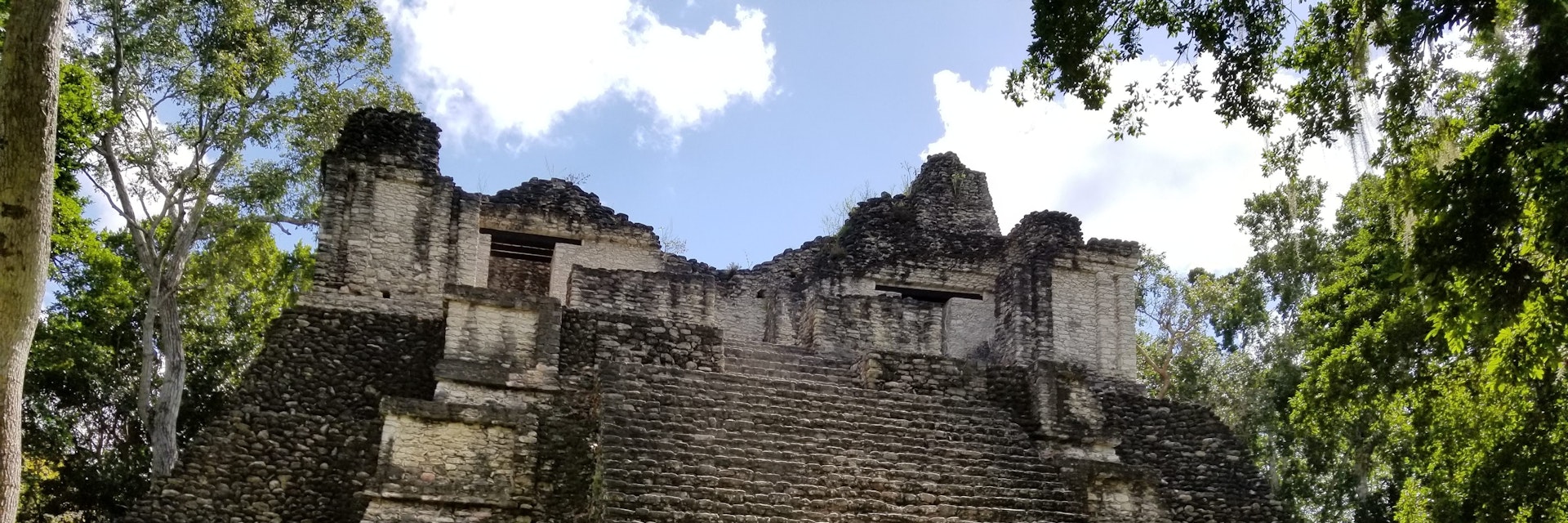Though it’s a chore to get to, this site is definitely worth a visit for its secluded, semi-wild nature. Dzibanché (meaning ‘writing on wood’) was a major city extending over more than 40 sq km and there are a number of excavated palaces and pyramids, though the site itself is not completely unearthed. On the way there you'll pass beautiful countryside.
The first restored structure you will come to is Edificio 6, the Palacio de los Dinteles (Palace of the Lintels), which gave the site its name. This is a perfect spot to orient yourself for the rest of the site: facing Edificio 6’s steps, you are looking east. It’s a pyramid topped by a temple with two vaulted galleries; the base dates from the early Classic period (AD 300–600), while the temple is from the late Classic period (AD 600–900). Climb the steps and stand directly under the original lintel on the right (south) side of the temple. Looking up you can see a Maya calendrical inscription with the date working out to AD 733. This is some old wood.
On descending, head to your left (south) and thread between a mound on the right and a low, mostly restored, stepped structure on the left. This structure is Edificio 16, Palacio de los Tucanes; in the center, from the side you first approach, are the visible remains of posts that bore a mask. The path then brings you into Plaza Gann. Circling it counterclockwise takes you past Edificio 14 (stuck onto the north side of a larger building), decorated at the base with tamborcillos (little drums), in late Classic Río Bec style – look up the dirt hill to see them. The larger building to the south is Edificio 13, Templo de los Cautivos, so named for the carvings in its steps of captives submitting to whatever captives submitted to in those days. This seems to be the dominant (if you’ll pardon the pun) theme in most Maya stelae.
On the east side of the plaza is Dzibanché’s highest structure, the Templo de los Cormoranes (Temple of the Cormorants; Edificio 2), whose upper structure has been restored.
Exit the plaza by climbing the stone steps to the north of Edificio 2. At the top of the stairs is Plaza del Xibalbá (Plaza of the Underworld), though it’s higher than Plaza Gann.
Opposite Palacio Norte is, of course, Palacio Sur, and from here you can see more of Edificio 2, but the most notable building is across the plaza: Edificio 1, the restored Templo del Buho (Temple of the Owl). It had an inner chamber with a stairway leading down to another chamber, in which were found the remains of a VIP and burial offerings. The nearly 360-degree views from the very top of the temple (it’s a bit dicey, so be careful) are quite impressive. You can see Grupo Lamay to the west and you may spot Kinich-Ná, more than 2km to the northwest.
The ticket price for Dzibanché also includes entry to Kinich-Ná, 2km to the north.

